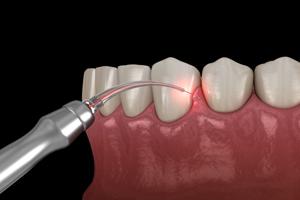Inlays and onlays are dental restorations used to repair damaged or decayed teeth. These custom-made pieces fit snugly into or over the affected area, providing a durable and natural-looking solution for tooth repair. Unlike traditional fillings, inlays and onlays are crafted in a dental lab and then bonded to the tooth, offering a more precise fit and longer-lasting results.
Key Takeaways
- Inlays and onlays are custom-made dental restorations
- They’re used to repair damaged or decayed teeth
- Inlays fit within the cusps of a tooth
- Onlays cover one or more cusps of a tooth
- Both are more durable than traditional fillings
- They’re made from materials like porcelain, gold, or composite resin
- The procedure typically requires two dental visits
- Inlays and onlays can last 10-30 years with proper care
Understanding Inlays and Onlays

Inlays and onlays are often called indirect fillings because they’re made outside the mouth and then placed on the tooth. They’re an excellent middle ground between fillings and crowns, offering more strength and durability than a filling without removing as much tooth structure as a crown would require.
What are Inlays?
Inlays are dental restorations that fit within the cusps (bumps) of a tooth’s chewing surface. They’re used when the damage is too extensive for a regular filling but not severe enough to need a full crown. Inlays are custom-made to fit the exact shape of the cavity, providing a tight seal that helps prevent further decay.
What are Onlays?
Onlays, sometimes called partial crowns, are similar to inlays but cover a larger area. They extend over one or more cusps of the tooth. Onlays are used when the damage is more extensive but still doesn’t require a full crown. They provide excellent protection for the remaining tooth structure while restoring function and appearance.
The Benefits of Inlays and Onlays

Inlays and onlays offer several advantages over traditional fillings and crowns:
- Preservation of tooth structure: They require less removal of healthy tooth material compared to crowns.
- Durability: They’re more resistant to wear and tear than regular fillings.
- Stability: They don’t expand or contract with temperature changes like some filling materials.
- Aesthetics: They can be color-matched to your natural teeth for a seamless appearance.
- Ease of cleaning: Their smooth surfaces make them easier to clean than some other restorations.
The Inlay and Onlay Procedure
Getting an inlay or onlay typically involves two dental visits. Here’s what you can expect:
First Visit
- The dentist removes any decay or old filling material from the tooth.
- They take an impression of the prepared tooth.
- A temporary filling is placed to protect the tooth.
- The impression is sent to a dental lab where the inlay or onlay is created.
Second Visit
- The temporary filling is removed.
- The dentist checks the fit of the inlay or onlay.
- If everything looks good, the restoration is bonded to the tooth.
- The dentist makes any necessary adjustments to your bite.
Materials Used for Inlays and Onlays
Inlays and onlays can be made from various materials, each with its pros and cons:
Porcelain
Porcelain is a popular choice for its natural appearance. It’s strong, durable, and can be color-matched to your existing teeth. However, it can be more expensive than other options.
Gold
Gold has been used in dentistry for centuries due to its durability and biocompatibility. It’s extremely long-lasting but doesn’t match the color of natural teeth.
Composite Resin
Composite resin is a more affordable option that can be color-matched to your teeth. It’s not as durable as porcelain or gold but can still last many years with proper care.
Caring for Your Inlays and Onlays
To ensure the longevity of your inlays or onlays:
- Brush twice daily with fluoride toothpaste
- Floss daily, paying extra attention to the restoration
- Avoid biting on hard objects like ice or pens
- Visit your dentist regularly for check-ups and cleanings
- Consider wearing a night guard if you grind your teeth
When Inlays and Onlays are Recommended
Your dentist might suggest an inlay or onlay in the following situations:
- When a tooth has a large cavity that’s too big for a filling
- If an old filling needs replacement
- When a tooth has been fractured or broken, but not severely enough for a crown
- To restore a tooth after root canal treatment
Comparing Inlays and Onlays to Other Dental Restorations
To better understand where inlays and onlays fit in the spectrum of dental restorations, let’s compare them to other common treatments:
| Treatment | Pros | Cons | Lifespan |
|---|---|---|---|
| Fillings | Quick, affordable | Less durable, may not prevent further decay | 5-10 years |
| Inlays/Onlays | Durable, preserves tooth structure | More expensive than fillings, and requires two visits | 10-30 years |
| Crowns | Covers the entire tooth, and is very durable | Requires significant tooth reduction, most expensive | 15-30 years |
The Cost Factor: Investing in Your Smile
While inlays and onlays are more expensive than traditional fillings, they’re often more cost-effective in the long run due to their durability and longevity. Here’s a breakdown of average costs:
| Restoration Type | Average Cost Range |
|---|---|
| Composite Filling | $150 – $450 |
| Inlay/Onlay | $650 – $1,200 |
| Crown | $1,000 – $3,500 |
Remember, these are average costs and can vary based on location, material used, and the complexity of the procedure. Many dental insurance plans cover a portion of the cost for inlays and onlays.
The Technology Behind Inlays and Onlays
Modern dentistry has embraced digital technology, making the process of creating inlays and onlays more efficient and precise. Computer-aided design and computer-aided manufacturing (CAD/CAM) systems allow dentists to create these restorations in a single visit.
The CEREC System
CEREC (Chairside Economical Restoration of Esthetic Ceramics) is a popular CAD/CAM system used in many dental offices. Here’s how it works:
- The dentist takes a digital scan of your tooth.
- The CEREC software designs the inlay or onlay based on this scan.
- A milling machine carves the restoration from a block of ceramic material.
- The dentist can then place the restoration immediately.
This technology eliminates the need for temporary restorations and multiple visits, making the process more convenient for patients.
Potential Complications and How to Avoid Them
While inlays and onlays are generally safe and effective, as with any dental procedure, there can be potential complications:
- Sensitivity: Some patients may experience temporary sensitivity to hot and cold after the procedure. This usually resolves within a few weeks.
- Fit issues: If the inlay or onlay doesn’t fit properly, it can lead to discomfort or even further decay. This is why it’s crucial to choose an experienced dentist.
- Allergic reactions: In rare cases, patients may be allergic to the materials used. Always inform your dentist of any known allergies.
- Damage: While durable, inlays and onlays can be damaged by excessive force or trauma to the tooth.
To minimize these risks:
- Choose a reputable, experienced dentist
- Follow all post-procedure care instructions
- Maintain good oral hygiene
- Avoid habits that could damage your teeth, like chewing ice
Making the Decision: Is an Inlay or Onlay Right for You?
Deciding whether an inlay or onlay is the best option for your dental needs involves several factors:
- The extent of damage: If the damage is too extensive, a crown might be necessary. If it’s minor, a filling might suffice.
- Location of the tooth: Inlays and onlays are often used on back teeth that endure more chewing forces.
- Cost considerations: While more expensive than fillings, they’re often more cost-effective in the long run due to their durability.
- Aesthetic preferences: If you want a natural look but need more than a filling, an inlay or onlay could be ideal.
- Desire to preserve tooth structure: If you want to keep as much of your natural tooth as possible, these restorations are a good choice.
Always discuss your options thoroughly with your dentist. They can provide personalized advice based on your specific dental health needs and goals.
Conclusion:
Inlays and onlays offer a valuable middle ground in dental restorations, combining the best aspects of fillings and crowns. They provide durability, preserve tooth structure, and offer aesthetic benefits. While they may require a larger upfront investment, their longevity often makes them a cost-effective choice in the long run.
As with any dental procedure, the key to success lies in choosing an experienced dentist and following good oral hygiene practices. With proper care, inlays and onlays can provide you with a strong, beautiful smile for many years to come.
Remember, your oral health is an integral part of your overall well-being. Investing in quality dental restorations like inlays and onlays isn’t just about aesthetics – it’s about maintaining your health and quality of life. Don’t these options with your dentist at your next visit.
